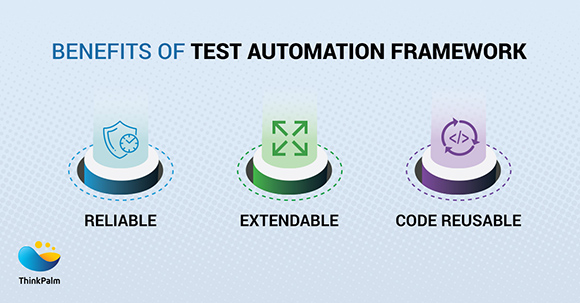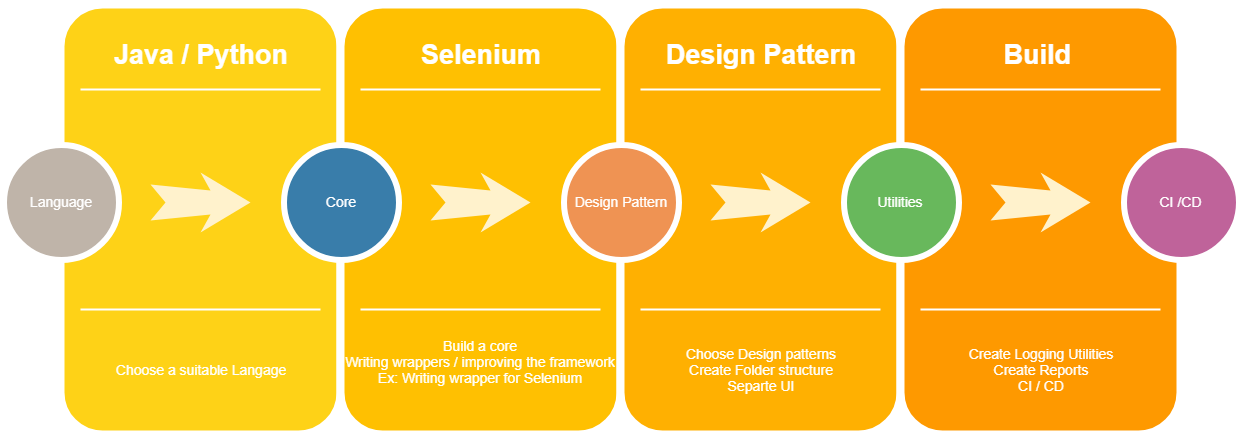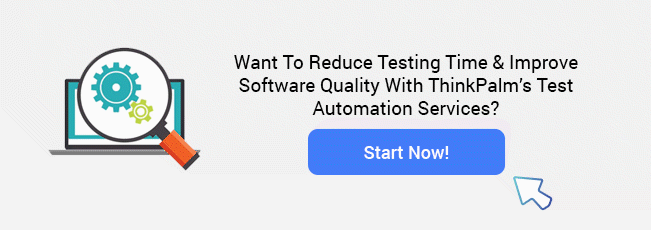Are you tired of spending countless hours on manual testing? Want to optimize your development process and increase efficiency? You don’t need to look further than an effective test automation framework.
In this article, we will explore the 7 essential steps to designing an automation framework, from creating wrapper methods to implementing custom logging and choosing the right design pattern. By following these steps, you can increase the quality, speed, workflow, and accuracy of your test cases while reducing maintenance expenses and testing trials.
So why wait? Read on to learn how to take your testing process to the next level.
A framework is composed of a sequence of tools and applications that are intended to improve test efficiency for QA professionals. The testing frameworks are a vital part of every successful automated testing process. They decrease maintenance expenses and testing trials and will implement a higher ROI for analysis teams looking to optimize their development processes.
Below are the key benefits of creating an automation framework:

Before writing the framework, people should understand the test automation’s basic requirements and flows. This requirement is significant because it can prevent designers from designing a defective architecture for the framework.
The test automation framework should be,
Automation frameworks in test automation are used to provide a structured approach to designing and executing automated tests. These frameworks provide a set of guidelines, rules, and standards to create maintainable, reusable, and scalable automated tests.
Using an automation framework allows testers to focus on test case design and development rather than the underlying technical details of test automation. It also helps to reduce the cost and effort of test automation by promoting code reuse, enhancing collaboration among team members, and reducing maintenance efforts.
Overall, automation frameworks help in achieving better test coverage, reducing test cycle time, increasing efficiency, and improving the quality of software products.
Here is a list of things to be considered while designing a framework.

Writing a wrapper method is one of the genuine solutions for extending the library features. An example of extending the wrapper method is to allow better logging capabilities and handling the errors well in Selenium.
For example, the click() method in selenium can be extended as:
While running the test cases; activity information has to be logged into the file. This added information can be used as a reference for future audits and test runs. Therefore, the logging framework needs to be implemented and customized for this requirement. The popular logging framework for java is log4j and python is Custom logger.
Choosing the right design pattern is important and it provides the best practices for creating the test framework. It speeds up the test case development and helps to prevent minor issues that can cause major problems and therefore improves code readability. The most popular design pattern for creating a selenium automation framework is the Page Object Model (POM), it separates UI operations from the functionality and makes the code clean.
There are many advantages of using the Page Object Model that includes,
Always separating the Test script logic from the automation framework is recommended. It increases code readability and makes the code readable.
Always defining the folder structure makes the code readable and makes it easy to understand. The folder can be structured as below,
The most important principle in framework design is the separation of concerns. Therefore creating an additional layer for web services, API, databases and UI in the framework will avoid the clutter. Sometimes the testing design pattern may not cover the extra layer in framework architecture; thus, it is good to create one more layer. The best example is separation Soap UI with selenium web driver integration.
Continuous Integration is a development practice that integrates with a build automation tool like Maven to ensure whether the software is running without any breaks after making a commit decision. 
Nowadays, the test automation framework has become an integral component of a software testing life cycle for all businesses. At ThinkPalm, we deliver high standards of software testing, our Test Automation services offer a high range of functional testing solutions that ensure prompt and constant performance.
Answer:
Answer: There’s no one “best” framework for automation testing. Make a choice based on project needs. Popular ones include Selenium, Appium, Robot Framework, TestComplete, and Cypress.
Answer: A test automation framework consists of several components, such as test data, driver scripts, environment variables, user libraries, recovery scenarios, object repository, AUT, and test reports.
If you want to unleash your software’s full potential, ThinkPalm’s Test Automation Services can help you create a powerful test automation architecture. Partner with ThinkPalm’s Test Automation Services to unlock the full potential of your software by using the best test automation strategies.
Our expert team of test automation engineers can design and implement a comprehensive test automation framework, ensuring your software performs at its best. From test case design to execution and reporting, we use automation to reduce testing time and increase efficiency. With a wide range of functional testing solutions, every aspect of your software is thoroughly tested and optimized for maximum performance.
Don’t settle for anything less than the best – contact us today to learn more and upgrade your software testing game and test automation process with ThinkPalm’s Test Automation Services.